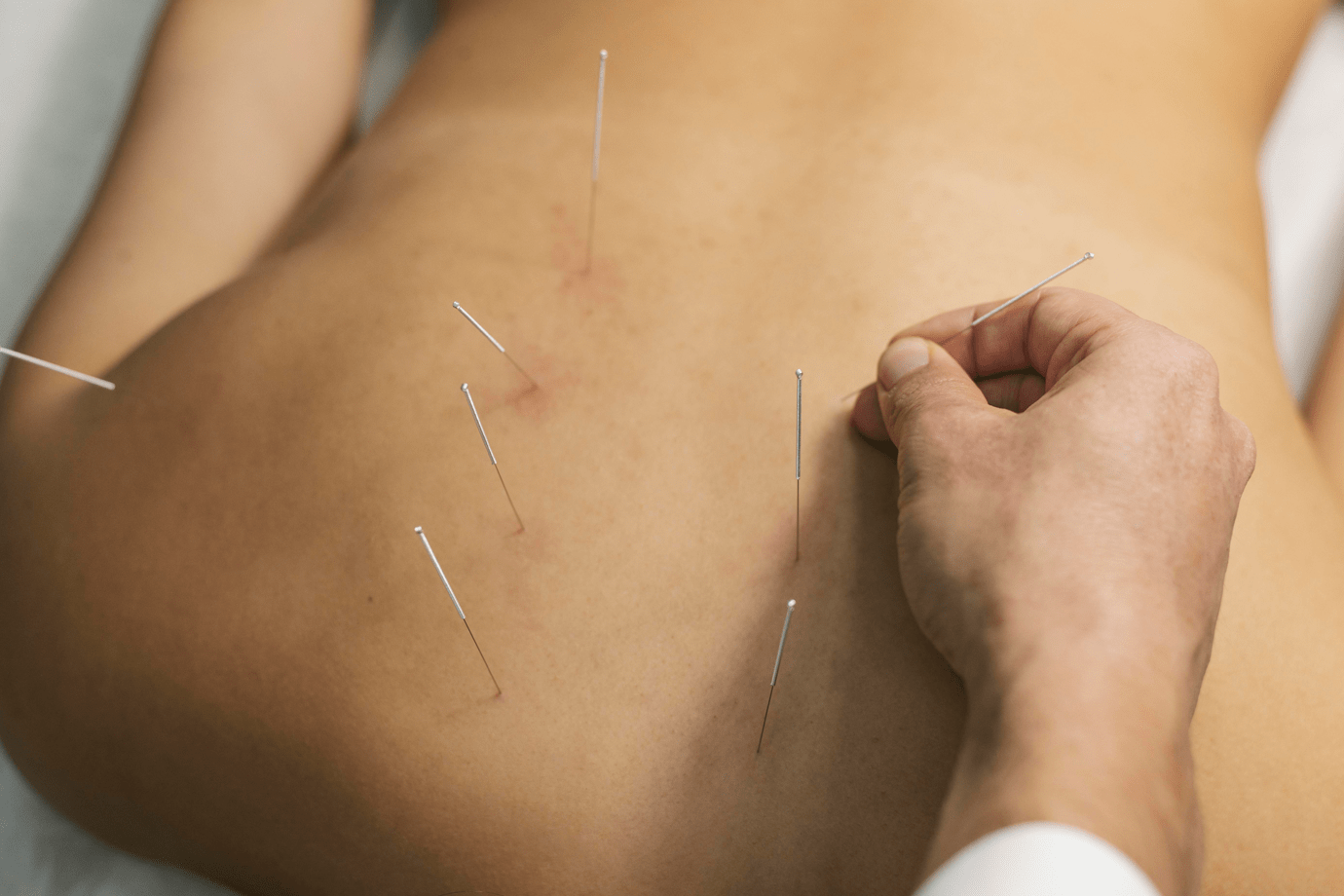


Sciatica is a complex of symptoms that affects millions of people worldwide. It frequently results in unbearable pain in the spine that spreads down to the legs. Pain relievers, physical therapy, and, in some cases, surgery are all options, but more and more people are resorting to acute pain treatment, including acupuncture. In this blog post, we will discuss how acupuncture relieves sciatica, what research supports these claims, and whether it is suitable for the chronic treatment of sciatica.
Acupuncture is the most effective traditional medication for pain alleviation and treatment of other health problems. Many individuals use acupuncture for pain, including sciatica. Fundamentally, acupuncture works to heal by activating the nerve pathways while reducing the inflammation around them.
During an acupuncture treatment, a certified acupuncturist thrusts needles into certain topographical locations on the body, which are commonly in relation to the nerve visuals. In addition, the acupuncturist may use a range of needles on the lower back, buttocks, and legs since these regions correspond to the sciatic nerve path for sciatica patients. Needles are retained in the body for around 20-30 minutes to enhance the body’s physiology.
Against this backdrop, you should approach sciatica acupuncture after learning how sciatica is conventionally managed. Common treatments for sciatica include:
However, these treatments have their drawbacks, which is the focus of this article. Some drugs give only temporary relief and can be dangerous; others are associated with certain risks and complications and entail a long postoperative rehabilitation. This is why several individuals turn to acupuncture as more of an adjunct therapy or recommender approach.
Related Blog: Acupuncture versus Massage: Exploring the Differences and Benefits
That being the case, how does acupuncture for sciatica work? The acupuncture theory proposes that the stimulation of specific points on the pathways in the body, significant channels, or meridians assists in freeing up pain points. For sciatica, acupuncture focuses on locations where the sciatic nerves are activated—the lower back, hips, and legs.
There is some evidence that acupuncture may work for sciatica by releasing the body’s natural painkillers. Acupuncture stimulates the production of adenosine, the body’s own analgesic, and reduces pain intensity. Furthermore, training relieves sciatica by increasing blood flow, freeing calcium, and breaking up bonding that can pinch the sciatic nerve. It is also said that acupuncture releases trigger points around the inflamed area to aid its healing.
For sciatica, an acupuncturist will typically target points such as:
Regarding scientific evidence, there are some investigations about using acupuncture for sciatica treatment. Although the research is still in progress, there are positive indications that acupuncture can be of value in helping those people suffering from sciatica.

Based on a research approach on randomized clinical trials reported in The Journal of Pain, the authors suggested the reduction of chronic pain, including those related to the lower back or sciatica, by acupuncture. According to the study, acupuncture had a more considerable mean difference for treatment than no treatment. However, the researchers also caution that more large sample studies are required to capture the full long-term impact of the exercise.
A study published in The Journal of Traditional Chinese Medicine found that patients treated with acupuncture had fewer sciatica pains and increased mobility than those who received routine treatment. Based on these outcomes, acupuncture may be helpful when treating sciatica.
It is common for people who experience sciatica pain to find much improvement following an acupuncture session. First of all, although anecdotal evidence cannot be used instead of scientific research, recent true-life experiences show how acupuncture might assist in handling sciatic nerve pain.
Acupuncture offers several potential benefits for those suffering from sciatica, including:
Those seeking natural therapies or who have not achieved control with conventional methods may find acupuncture helpful. However, seeking medical advice, especially in severe cases, is vital before using acupuncture. Always select a certified and qualified acupuncturist for the treatment to guarantee its effectiveness and safety.
Therefore, acupuncture may be used as an additional or replacement therapy for sciatic-related complaints. It may not always be effective, but following this decreases or at least minimizes the issue of pain and increases mobility in the lives of many patients. If you are thinking about making acupuncture for sciatica a part of your therapy, speak with your healthcare provider and find out more about this safe, drugless approach to treatment.


Whether you are suffering from arthritis pain, headaches, fatigue, depression, or even tumors, Dr. Ma Acupuncture Centre is the tried and tested provider of Chinese medicinal techniques that yield the desired results with the use of safe and proven effective solutions.
Here at Dr. Ma Acupuncture Centre, we are passionate about helping people feel better as they get healthier. We customize our acupuncture, Chinese Massage, and Gua Sha Therapy services to each individual’s precise needs. This means that you get the exact solution for your unique health issues every time.
So if you are in Ellicott City and are in search of the trusted specialist in acupuncture and Chinese Massage Ellicott City MD folks rely on, there is only one name to keep in mind – Dr. Ma Acupuncture Centre!

For additional questions, either fill out the contact form, send me an email, or give me a call at +1 443-756-0563, +1 301-473-2788